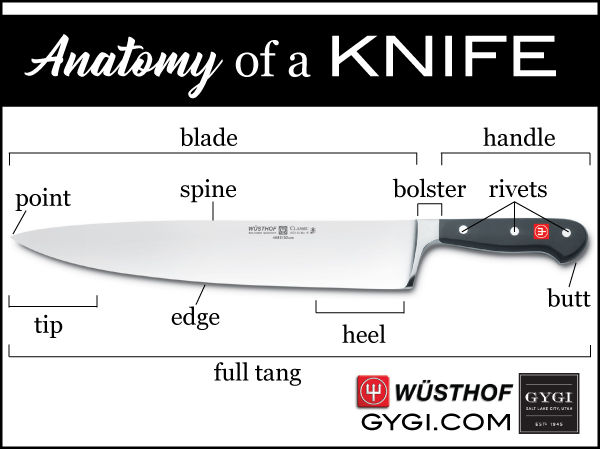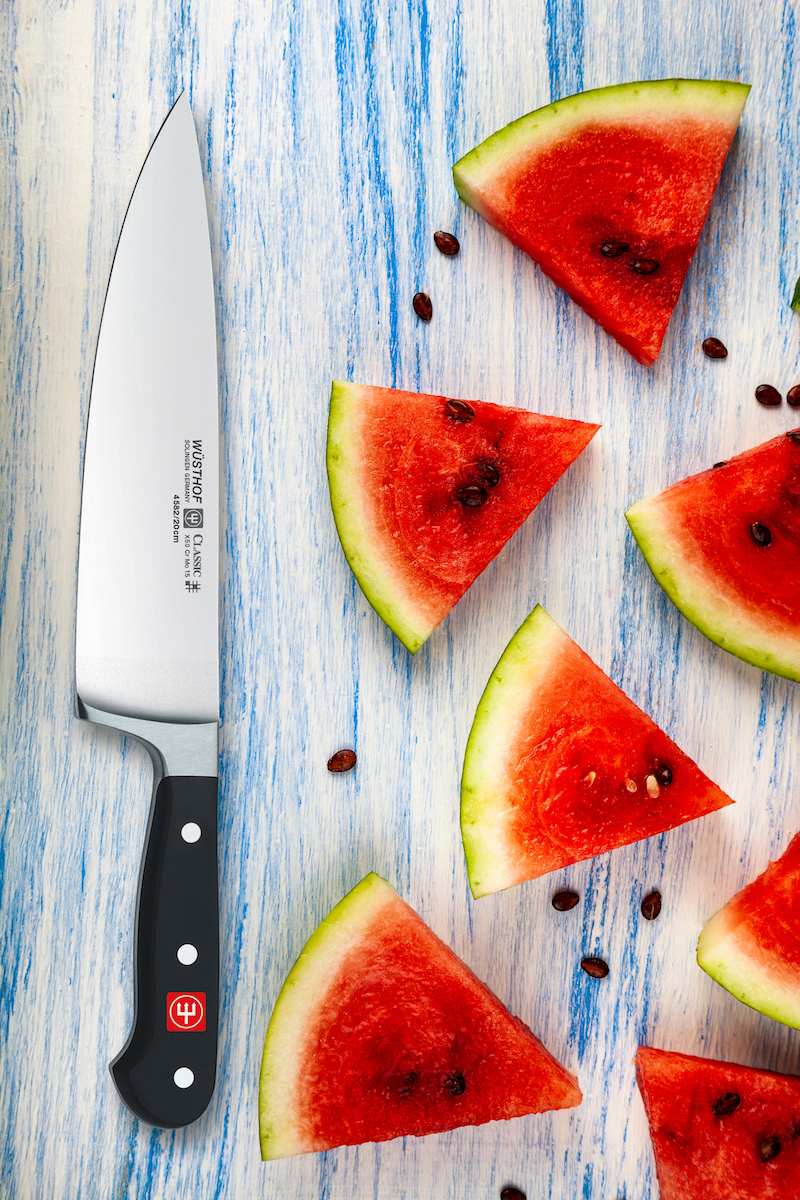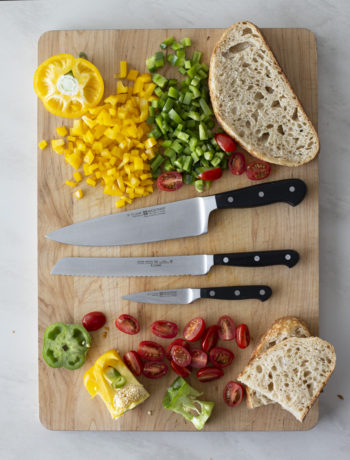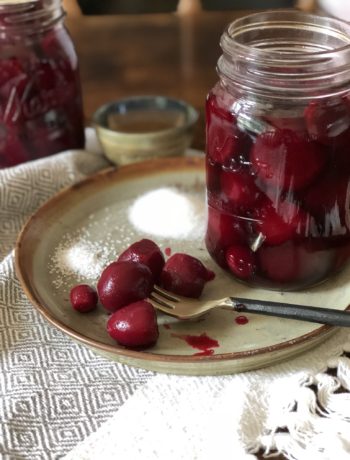Simply put, a knife is made of two parts: the metal blade and the handle. But, more specific knife vocabulary can help you understand your knife, as you discover the specific jargon manufacturers use when referring to knife features. Learning about the anatomy of a knife will help you understand the importance of a bolster or full tang, creating a true knife expert!

- BLADE: The blade is the metal portion of the knife that extends beyond the handle. This part of the knife does the cutting, dicing, and slicing.
- POINT: The point is the very sharp tip of the knife. It is often used to pierce through foods. Take care not to break your point on hard foods (or opening boxes!).
- TIP: The tip is the front quarter of the blade. This part of the knife does a lot of work, cutting and separating foods. A curved tip is ideal for a rocking motion chop. A sure
- HEEL: The last quarter of the blade. The widest part of the knife is used for tasks that require a lot of force, like dense meat or vegetables. The part of the knife has the most leverage and control.
- EDGE: The edge is the sharpened part of the knife’s blade. The thinner the edge, the sharper the knife. Western knives are sharpened to 20 degrees, while Asian knives are sharpened to 15 degrees.
- SPINE: The spine is the unsharpened side of the knife blade.
- BOLSTER: The bolster is only found on forged knives. It is a thick band of steel found between the heel of the knife and the handle. The extra steel makes the knife feel well balanced. It also creates a barrier for your fingers to hold onto and prevents slipping.
- HANDLE: The handle is the section where the user holds the knife. Common handle materials include plastic, metal, wood, rubber, and wood/plastic composites.
- RIVETS: Rivets are the metal or wood fasteners that hold the handle of the knife to the tang of the knife. The best knives have three rivets.
- BUTT: The butt is the end of the knife’s handle, farthest away from the blade.
- TANG: The tang is the extension of the blade that continues into the handle of the knife. A full tang runs through the entire handle of the knife. These knives are superior in balance and durability. A half tang only runs through part of the handle, making them less durable and unbalanced.
Stay tuned for the next post in our Knife Know How series.
You can also follow along on the Orson Gygi Instagram.




No Comments